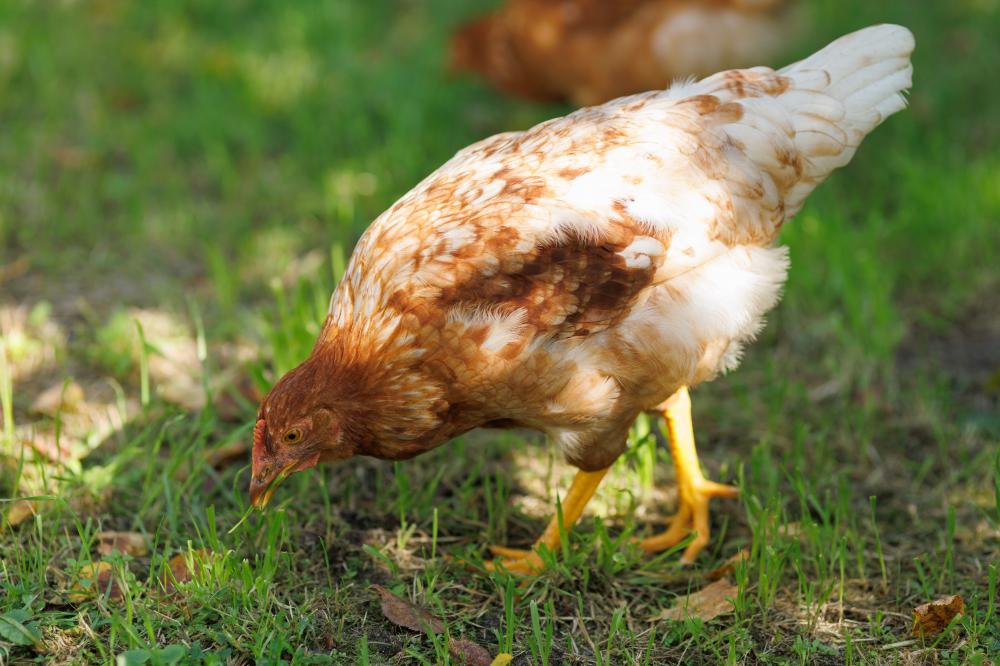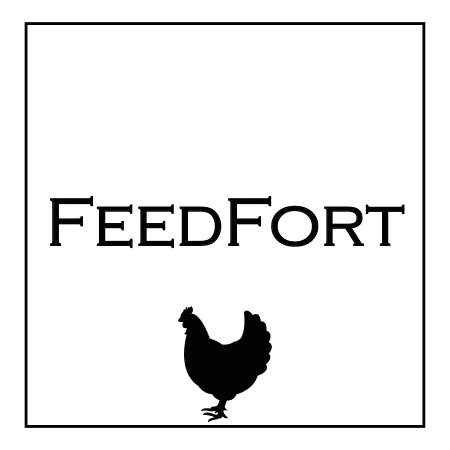Chicken Coop Feeder

Introduction to Chicken Coop Feeder
When it comes to raising backyard chickens, ensuring they have consistent access to food is a key component of their care. The chicken coop feeder plays a critical role in this process, offering a smart, secure way to feed your feathered friends. At FeedFort, we’ve revolutionized the way chicken feed is protected with our patent-pending automatic feeder.
Why Choose FeedFort?
Our commitment at FeedFort is to provide a chicken coop feeder that keeps feed secure and rodents at bay. Using advanced photocell technology, our feeders open with the morning light and close at dusk, ensuring your chickens have access to feed when they need it without inviting pests.
Made from durable 5052 Aluminum, this American-made innovation not only offers durability but also peace of mind. The risk of disease, mites, and food spoilage decreases significantly when rodents are kept out of the feed. With the added benefit of a slow descent feature, our feeders minimize spillage and waste, making your investment in chicken feed go further.
Benefits of Using FeedFort
Saves Time and Money
One of the primary benefits of the FeedFort chicken coop feeder is its efficiency. No longer will you have to wake up at the crack of dawn to feed your chickens or worry about going out of town and leaving them without feed. Our automatic system takes care of it for you, saving time and ultimately money by reducing waste.
Protects Against Pests
Rodents are not only a nuisance but can carry diseases that threaten your flock’s health. The secure design of our feeder ensures that rats, mice, and other pests cannot access the food, maintaining the cleanliness and safety of your chicken’s environment.
How It Works
The FeedFort chicken coop feeder operates on a simple yet effective photocell technology. This sensor detects when the sun rises and sets, automatically opening to allow chickens access to their feed during the day and securely closing at night. This not only fortifies your feed against nocturnal pests but also aligns with the natural feeding patterns of your chickens.
Installation Tips
Installing your FeedFort feeder is a straightforward process that can dramatically enhance your chicken-keeping experience. Position the feeder at a height that is easily accessible for your chickens but high enough off the ground to deter pests. Ensure it is securely fastened to prevent tipping or damage from larger animals.
Maintaining Your Feeder
Regular maintenance of your FeedFort chicken coop feeder is essential for its longevity and effectiveness. Cleaning the feeder periodically to remove any dust, debris, or leftover feed will keep it in optimal condition. Inspecting the photocell sensor for cleanliness also ensures that it operates correctly, opening and closing as intended.
Personal Experiences
In my journey with backyard chickens, integrating a FeedFort feeder has been a game-changer. Not only has it streamlined the feeding process, but it has also provided an unexpected peace of mind. Observing the flock enjoy their meals without the interference of pests or the worry of food running out has been incredibly rewarding.
Another unexpected benefit was the community it fostered. Sharing insights and successes with other local chicken enthusiasts has brought a new level of joy to this endeavor. The reliability and efficiency of the FeedFort chicken coop feeder have certainly been at the heart of these conversations.

Should chicken feeders be in the coop?
Absolutely, positioning chicken feeders inside the coop can be a strategic choice for several reasons. First off, it protects the feed from external environmental factors such as rain or snow, which can spoil the feed and lead to waste. Secondly, it can help in deterring wild birds and pests from stealing the feed, which not only saves feed but also reduces the risk of disease transmission to your flock. At FeedFort, we’ve designed our feeders to fit comfortably inside or just outside your coop, depending on your specific setup and preferences. Remember, the key is to ensure that your chickens have easy access to feed while keeping it secure from unwanted guests.
What type of feeder is best for chickens?
The best type of feeder for chickens is one that aligns with the needs of your flock and your daily routine. Automatic feeders, like the one we offer at FeedFort, are becoming increasingly popular due to their convenience and effectiveness at keeping pests away. Our automatic feeder, which utilizes photocell technology to open at dawn and close at dusk, caters to the natural feeding patterns of chickens and ensures feed is available when they need it most. Additionally, it’s built from durable materials to withstand the elements and the pecking of hungry chickens. The choice of feeder also depends on the size of your flock and the space available, but a secure and efficient feeder is always a winner.
Should chicken feeders be off the ground?
Yes, elevating chicken feeders off the ground is a wise practice and one that we recommend with our FeedFort feeders. The reasons are manifold. For starters, it reduces the risk of feed contamination from feces and dirt, which could lead to health issues within your flock. Additionally, having the feeder off the ground makes it more difficult for pests such as rats and mice to access the feed, thus enhancing the feeder’s security. An ideal height is one at which your chickens can comfortably eat without having to stretch or crouch too low, generally a few inches off the ground depending on the size of your breed. It’s a simple adjustment that can significantly impact the health and safety of your flock.
What size feeder do I need for 4 chickens?
For a flock of four chickens, a feeder that holds around 4-6 pounds of feed should be ample, ensuring that each chicken has enough access to feed throughout the day without overcrowding. Our design at FeedFort considers not just the capacity but also the efficiency and ease of use. A feeder of this size would typically need refilling every few days, depending on how much your chickens eat and how efficiently the feeder dispenses feed. It’s also worth considering a slightly larger feeder if you’re not able to refill it daily. This way, you’re sure your chickens always have access to their feed, especially if you’re away for a weekend.
What are some unexpected benefits of using an automatic feeder like FeedFort’s?
One of the less immediately obvious benefits of using an automatic feeder like ours is the positive impact on the mental well-being of your chickens. Having consistent, reliable access to food reduces stress and competition among the flock, leading to happier, healthier chickens. Moreover, owners often report the unexpected joy that comes from watching their flock calmly feed at their own pace, knowing that there’s always enough food available without waste or spoilage. Additionally, the community aspect cannot be understated. Sharing experiences and tips with fellow poultry enthusiasts fosters a sense of community that enriches the chicken-keeping experience for everyone involved. Have you noticed an improvement in your flock’s harmony since using an automatic feeder?
Resources
- United States Department of Agriculture (USDA) – The USDA provides valuable information on poultry care, including feeding recommendations and guidelines for backyard chicken owners.
- University of Minnesota Extension – Offers research-based information on poultry management, including feeding practices and coop design for optimal chicken health.
- Backyard Chickens – An online community dedicated to raising chickens, providing forums where chicken enthusiasts can share experiences and advice on coop feeders and other aspects of poultry care.
- Poultry Pages – A comprehensive resource for poultry enthusiasts, offering articles and guides on various aspects of chicken care, including feeding and coop maintenance.
- Iowa State University Extension and Outreach – Provides research-based information on poultry nutrition and management, offering insights into best practices for feeding backyard chickens.

